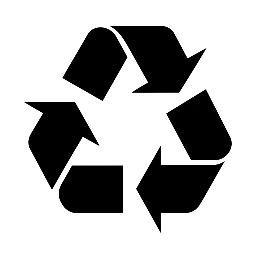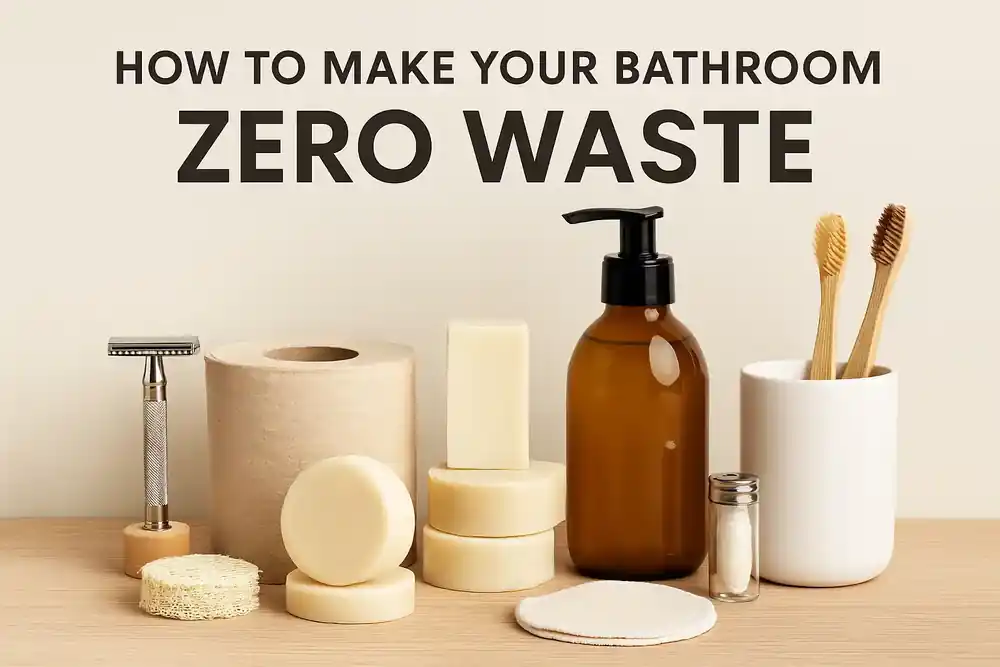The bathroom may be small, but it’s one of the most wasteful rooms in the home. From disposable razors to plastic shampoo bottles, the average person generates pounds of plastic waste annually just from personal care products. Thankfully, transitioning to a zero waste bathroom is easier than you might think.
In this guide, you’ll learn how to swap out everyday bathroom items for zero waste, plastic-free, and eco-friendly alternatives, helping you reduce your environmental impact while saving money and living more intentionally.
Why Go Zero Waste in the Bathroom?
Transitioning to a zero waste lifestyle starts with simple habit changes. The bathroom is an ideal place to start because:
- It contains high-volume single-use plastic items.
- Most waste is avoidable with reusable or biodegradable options.
- It reduces your exposure to harmful chemicals and microplastics.
- You’ll save money long-term by avoiding disposables.
According to the Environmental Protection Agency (EPA), plastic packaging makes up a large portion of household waste, much of which comes from personal care items.
Step-by-Step Guide to a Zero Waste Bathroom
1. Audit Your Current Bathroom Waste
Before replacing anything, spend a week observing what you throw away. Track:
- Plastic bottles (shampoo, conditioner, body wash)
- Razors and shaving cream cans
- Dental care products (toothpaste tubes, floss)
- Feminine hygiene products
- Toilet paper packaging
This audit helps you identify your biggest waste contributors.
2. Swap Disposable Items for Reusables
🪒 Safety Razor
A stainless steel safety razor with replaceable blades lasts a lifetime and eliminates plastic entirely.
🧻 Plastic-Free Toilet Paper
Choose brands offering 100% recycled or bamboo-based toilet paper:
🧴 Shampoo & Conditioner Bars
Package-free and ideal for travel:
3. Sustainable Oral Care
🪥 Bamboo Toothbrush
Plastic toothbrushes take 400+ years to decompose.
🪠 Toothpaste Tablets
Use tablets or powders in glass jars.
🧵 Biodegradable Floss
Biodegradable silk or corn fiber floss in glass containers.
4. Menstrual Products
Traditional products produce massive waste over a lifetime. Switch to:
5. Eco-Friendly Skincare and Makeup
- Choose refillable packaging: Elate Cosmetics, Kjaer Weis
- Use reusable cotton rounds: Marley’s Monsters
- Replace wipes with washable cloths.
6. DIY Bathroom Cleaners
All-Purpose Vinegar Cleaner
- 1 part vinegar + 1 part water + lemon rind
- Optional: 5 drops essential oil
- Store in a glass bottle and use with cloth rags
Sugar Scrub
- 1 cup brown sugar + 1/2 cup coconut oil + few drops essential oil
- Store in a jar, use as exfoliant
Calendula Salve
- Steep calendula petals in olive oil for 2 weeks, strain, mix with beeswax
- Pour into glass jar or reused container
7. Water and Energy Saving Upgrades
- Low-flow Showerhead – Buy on Nebia
- Dual-Flush Toilets – Save up to 67% water
- Smart Valves – Auto shutoff to limit hot water usage
8. Eco-Friendly Organization
- Glass jars for cotton swabs or tabs
- Bamboo trays for storage
- Repurpose old containers
- Monthly decluttering to reduce excess
9. Create a Sustainable Routine
- Weekly: Refill items, wipe surfaces
- Monthly: Deep clean with DIY formulas
- Quarterly: Restock staples in bulk
10. Zero Waste Starter Kit (Summary)
- Safety razor
- Shampoo & conditioner bars
- Bamboo toothbrush + toothpaste tabs
- Silk dental floss
- Menstrual cup/underwear
- Refillable skincare
- DIY cleaner kit
Common FAQs
Q: Is going zero waste expensive? Not long-term. You save by avoiding repeated disposable purchases.
Q: What do I do with old bathroom items? Use up, donate unopened items, and recycle containers.
Q: Can I go 100% zero waste? Not perfectly—and that’s okay. Every small change adds up.
Conclusion
Creating a zero waste bathroom is an empowering step toward sustainable living. You don’t need to do it all at once—start small, stay consistent, and celebrate every eco-friendly swap!


Leave a Reply